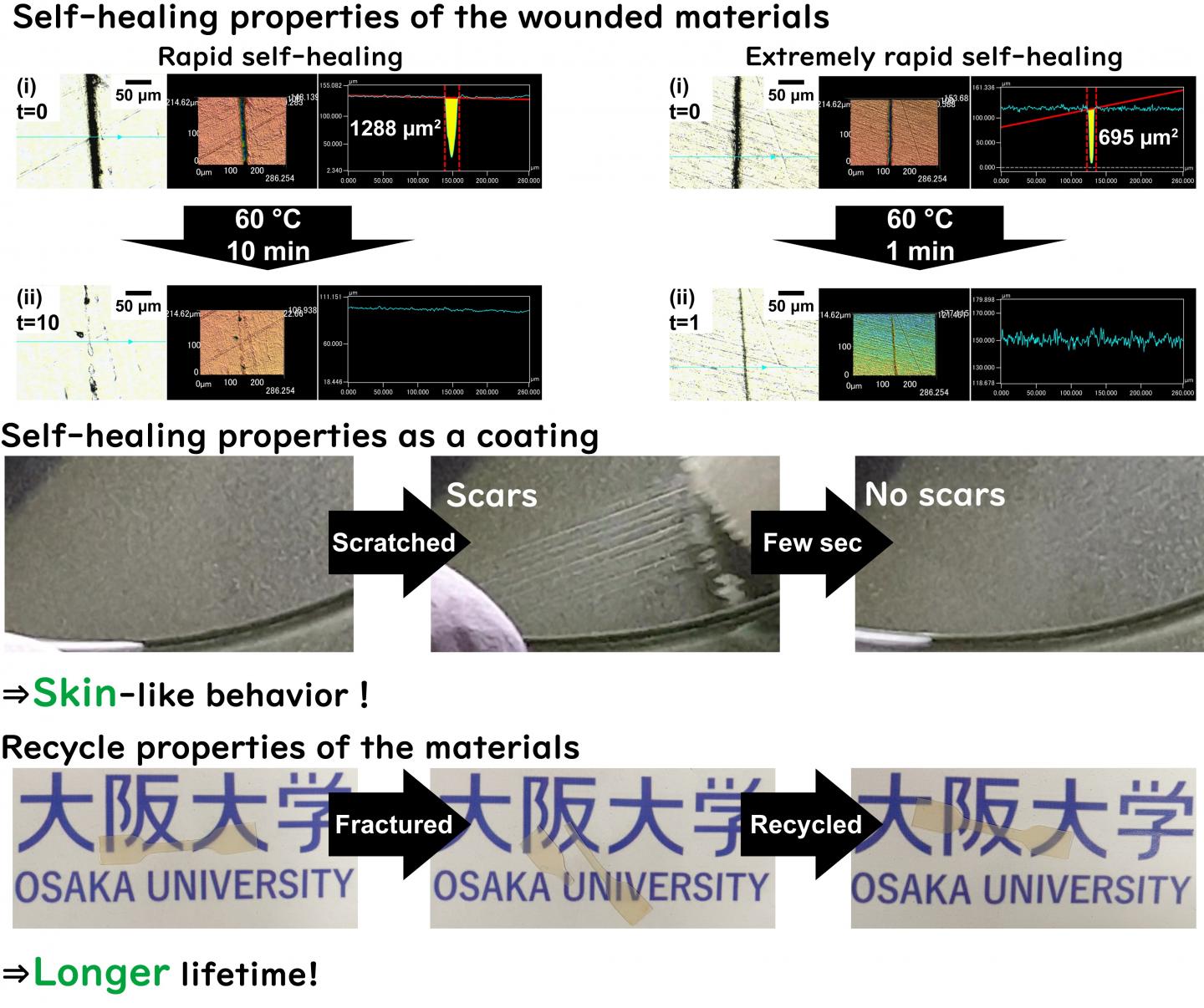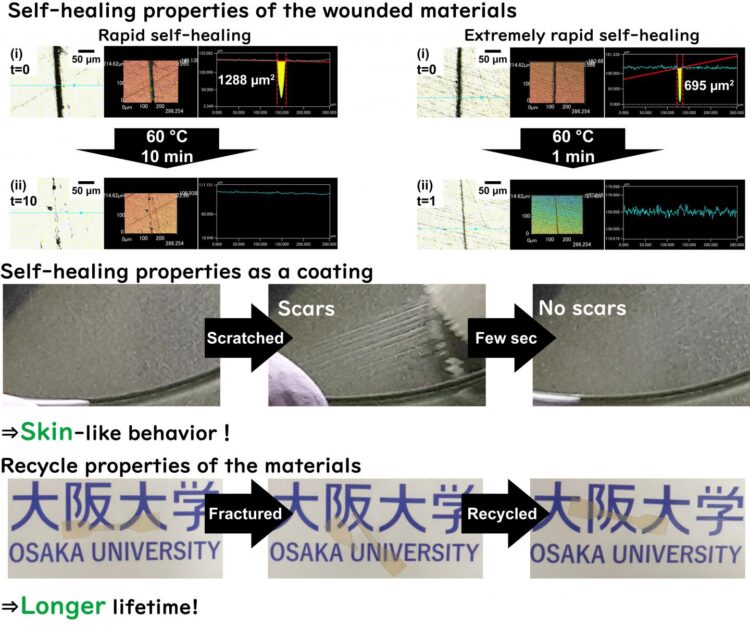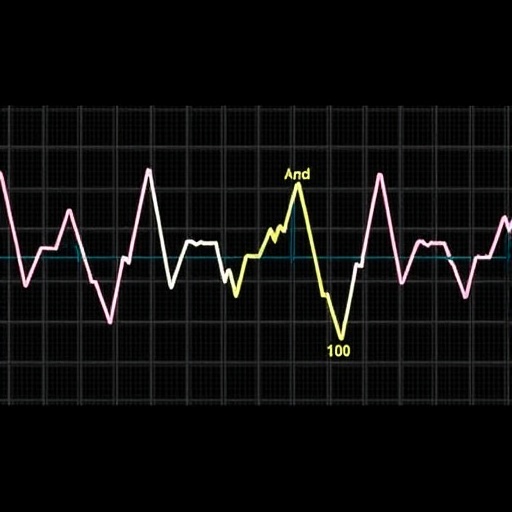Researchers from Osaka University have developed eco-friendly polymer materials with extended functional lifespans that are self-healing, tough and recyclable, by innovatively using a planetary ball mixing method

Credit: Osaka University
Osaka, Japan – Plastics are ubiquitous in modern life; unfortunately, once they lose function, they pollute the environment. Now, researchers at Osaka University have developed polymer materials that combine self-healing with strength and recyclability that could extend the functional lifetimes of manufactured plastics, thus minimizing the surging problem of discarded remnants.
Polymers are versatile substances, composed of many repeating molecular subunits, with essential and diverse functions in biological processes and industry. Sadly, their durability is double-edged: waste plastics generate litter and can contaminate our environment for centuries. About 50 kg of plastics is produced annually for every human; this doubles every decade. By the year 2050, there may be more plastics in our oceans than fish. As plastics are indispensable, extending their functional life by enhancing durability, self-healing and recyclability can help reduce waste.
Host-guest interactions, a fascinating branch of supramolecular chemistry, describes molecular complexes held in unique structural relationships by non-covalent bonding. These physical linkages allow molecular recognition and are ideal for preparing materials with rapidly reversible properties.
“We prepared supramolecular materials by mixing host and guest polymers of acetylated β-cyclodextrin and adamantane,” explains Junsu Park, lead author. “We compared three mixing methods: conventional casting, planetary kneading and ball-milling. Ball-milling employs zirconia balls in a zirconia grinding jar on a sun-wheel revolving eccentrically in reverse. The additional rotational forces on the grinding surfaces and the interplay between impact and friction cause nanoscale mixing.”
The researchers analyzed the polymers by wounding, re-joining, as coating of a glass substrate and after repeated ball-milling. Using dynamic mechanical analysis, thermal property measurements, small angle X-ray scattering measurements, and confocal laser scanning microscopy, etc they assessed scratch resistance, deformability and tensile strength.
The results were remarkable. Planetary mixing efficiently produced tough, self-healable, and recyclable supramolecular materials. Surface scratches disappeared in seconds and fractured fragments united in minutes. Moreover, mechanical properties were preserved even after repeated milling. “Ball-milling disentangles the polymer chains in the materials and increases their mobility while facilitating their re-formation,” Park explains. “This maintains the number of host-guest interactions, ensuring both self-healing and toughness.”
Senior author Yoshinori Takashima describes the potential of these discoveries: “We can develop tough materials capable of self-repair that retain these properties even when recycled. Prolonging their functional lifespan is key to saving the environment as they are being increasingly deployed in manufacture. Additionally, their unique biomimetic properties open up avenues of application in fields such as artificial skin for prostheses, robots and even vehicles.”
###
The article, “Extremely rapid self-healable and recyclable supramolecular materials through planetary ball milling and host-guest Interactions,” was published in Advanced Materials at https:/
About Osaka University
Osaka University was founded in 1931 as one of the seven imperial universities of Japan and is now one of Japan’s leading comprehensive universities with a broad disciplinary spectrum. This strength is coupled with a singular drive for innovation that extends throughout the scientific process, from fundamental research to the creation of applied technology with positive economic impacts. Its commitment to innovation has been recognized in Japan and around the world, being named Japan’s most innovative university in 2015 (Reuters 2015 Top 100) and one of the most innovative institutions in the world in 2017 (Innovative Universities and the Nature Index Innovation 2017). Now, Osaka University is leveraging its role as a Designated National University Corporation selected by the Ministry of Education, Culture, Sports, Science and Technology to contribute to innovation for human welfare, sustainable development of society, and social transformation.
Website: https:/
Media Contact
Saori Obayashi
[email protected]
Related Journal Article
http://dx.





